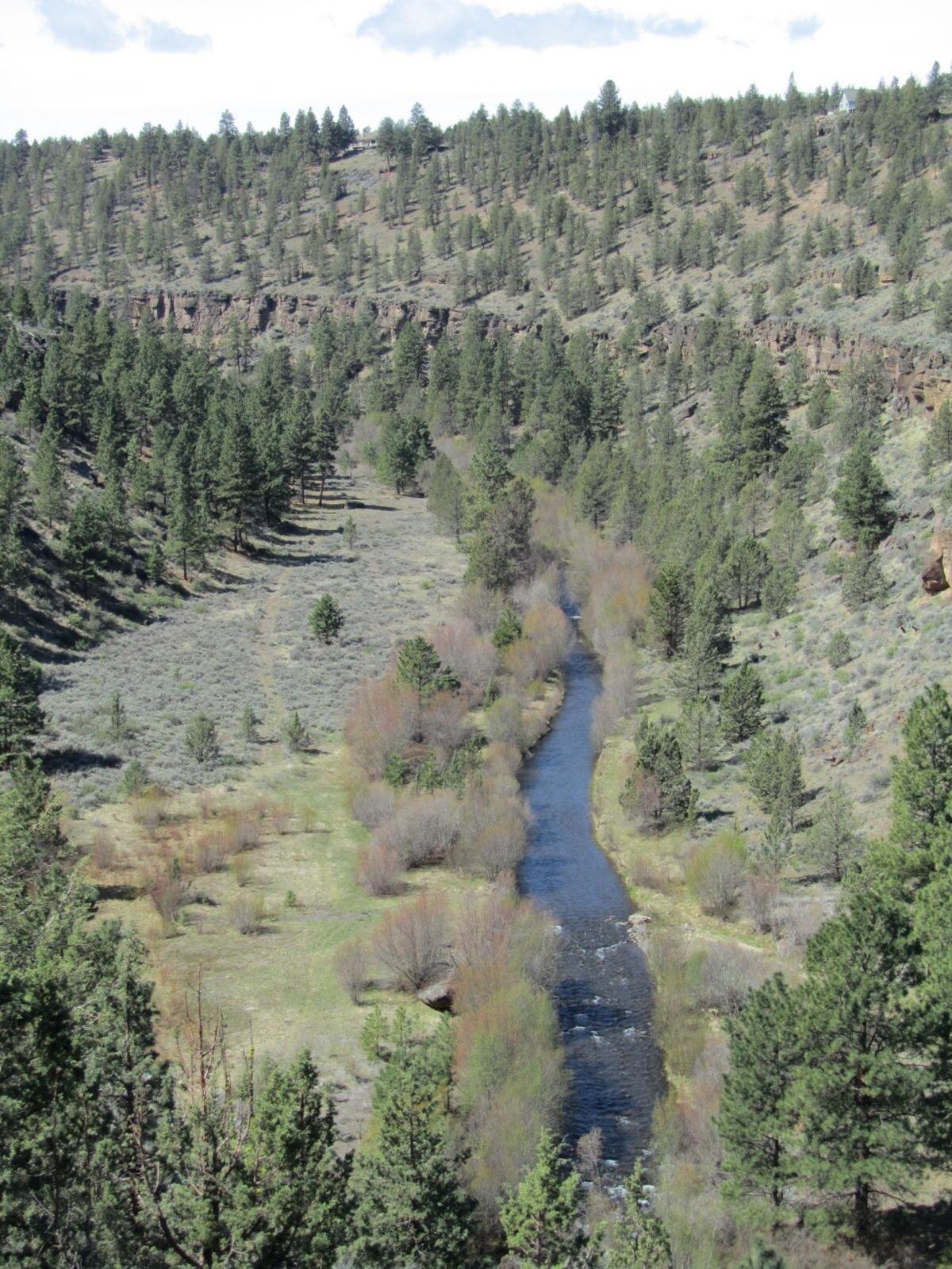How does the HCP affect Whychus Creek?
Part 3 as we dive into U.S. Fish & Wildlife Service’s conservation plan for the Deschutes River Basin.
The Habitat Conservation Plan (HCP) is an enforceable agreement between irrigation districts and federal agencies meant to reduce the harmful effects of irrigation, but the plan currently put forth is woefully inadequate to address the health of the River, the needs of our farmers and the welfare of fish and wildlife.
Whychus Creek via tdn.com
How does the HCP affect Whychus Creek?
We’ve recently been highlighting how the HCP affects the Upper Deschutes, but our concerns extend to Whychus Creek, too. Three Sisters Irrigation District (TSID) has set a goal to “maintain increased flows” rather than to “restore additional flows” throughout the thirty-year permit. Maintaining current streamflows is problematic. Significantly more water is needed to support the habitat and biological needs of Mid-Columbia Steelhead and Chinook Salmon.
What we asked for:
TSID diverts water from Whychus Creek, a volatile, steep mountain stream with no water storage reservoirs. Flows in the creek are highly variable, depending entirely on snowpack from the Three Sisters mountains and their associated groundwater. Therefore, water allocations for irrigators and fish should depend on water availability in a particular year, rather than a fixed share in all water years.
The augmented flows will expand the physical habitat and reduce the water temperature for fish at crucial times in their life cycles.
Our recommended flows of “wet water” at Whychus Creek Sisters City Gauge:
* Indicates the minimum flow guarantee, but streamflow will often be higher up-to and including all the available water. However, TSID has the right to divert during these months, and from time to time, it will divert a significant portion of the water for stock runs, fill re-regulating reservoirs, early crops, etc.
In normal/wet hydrologic years, TSID should increase instream flows to support Steelhead and Chinook’s critical life cycle stages. April and May are crucial months for Steelhead spawning, in addition to Chinook and Steelhead juvenile rearing, juvenal out-migration, and adult in-migration. As the snowpack melts, natural flows increase during April and May, making it feasible for TSID to increase flows for fish.
Subsequently, TSID should improve streamflows in late summer/early fall. September, October, and November are important months for Steelhead rearing and adult in-migration and Chinook spawning, egg incubation, juvenile rearing, and juvenile out-migration. Flows naturally reduce in the fall heading into winter. This period coincides with shorter days, cooler temperatures, and the end of the growing season so that irrigators can provide more water for fish.
During dry years, TSID can leave less water instream but should maintain base flows of 33 cfs in all months except for March, May, and October, which need 50 cfs for critical support to Steelhead and Chinook spawning.
What they gave us:
TSID will pass all water the District has converted to permanent instream water rights on Whychus Creek (currently 31.18 cfs) at its diversion. TSID will also pass all water required under Oregon water law to senior water right holders downstream of the TSID diversion (currently 3 cfs), for a combined minimum flow past the TSID diversion of 34.18 cfs.
Unfortunately, Whychus Creek is significantly over-appropriated – too many water rights issued than the creek has water in July, August, and September. When Whychus Creek gets low every summer, all water rights, including instream rights, get regulated down by as much as 50%. TSID has agreed to a minimum flow, but it will only yield a flow of 12 cfs through Sisters, a flow that can create lethal temperatures downstream for fish.
At its current proposal, the HCP will lock-in Whychus Creek’s streamflows at a level far below what Steelhead and Chinook need for spawning, rearing, and migration


